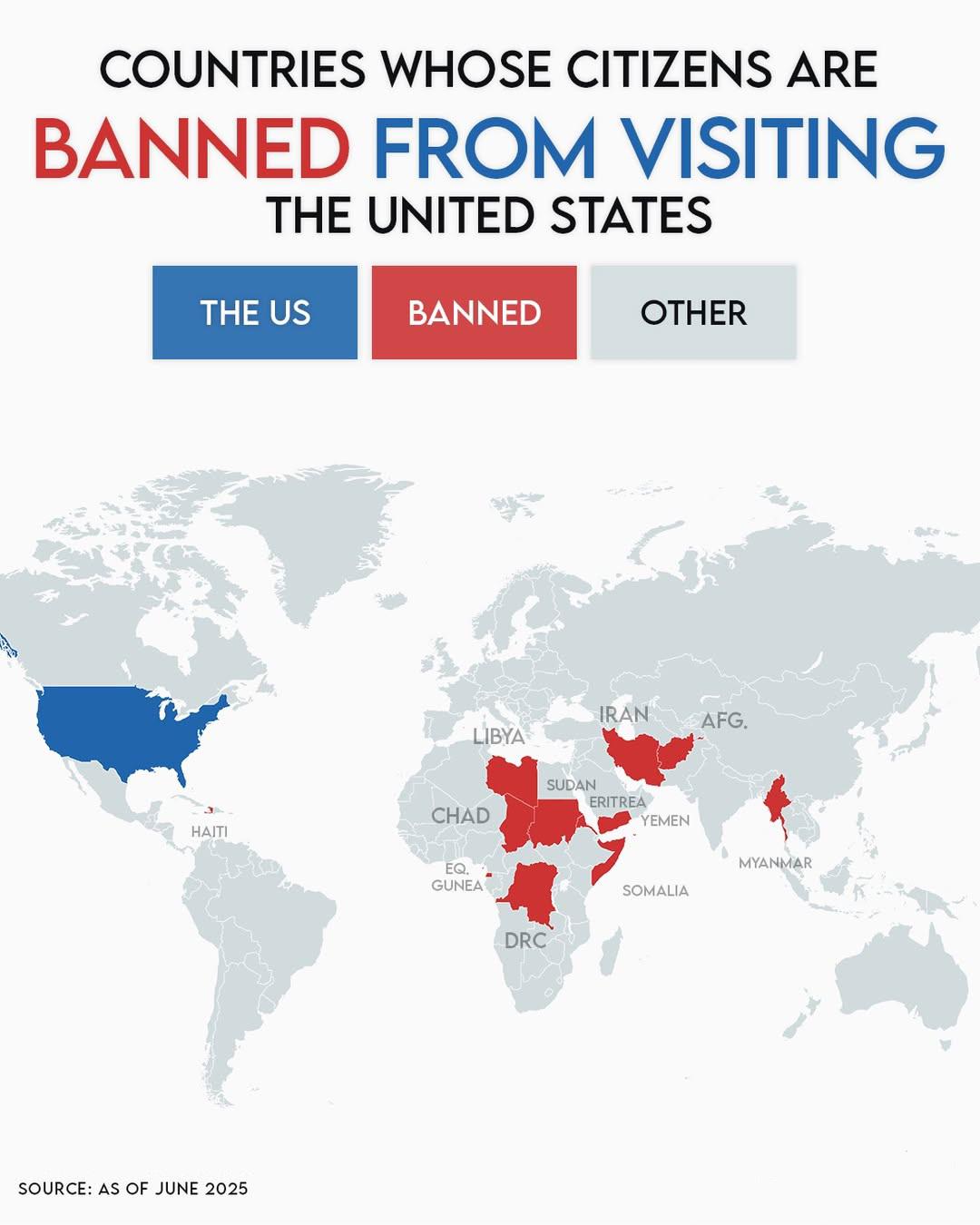Countries Whose Citizens Are Banned from Entering the United States Map


Alex Cartwright
Senior Cartographer & GIS Specialist
Alex Cartwright is a renowned cartographer and geographic information systems specialist with over 15 years of experience in spatial analysis and data...
Geographic Analysis
What This Map Shows
The visualization at hand provides a clear depiction of countries whose citizens currently face restrictions preventing them from entering the United States. These restrictions can stem from various political, social, or security issues, and they highlight the complex dynamics of international relations and immigration policies. Understanding the reasons behind these bans is crucial for grasping the broader context of global migration and diplomacy.
Deep Dive into Travel Bans
Travel bans have become a significant aspect of international relations in the modern age, often reflecting the geopolitical climate. The countries depicted in this map are subjected to restrictions that limit their citizens' ability to enter the U.S. These bans can originate from several reasons: national security concerns, diplomatic disagreements, or specific legal statutes that target certain groups for various reasons.
Take, for instance, the travel restrictions imposed during specific administrations in the U.S. These measures often arise in response to perceived threats, such as terrorism or human rights violations. The most notable example in recent history is the travel ban initiated in 2017, which targeted several predominantly Muslim countries. This controversial policy sparked widespread debate over its implications for civil liberties, global relations, and the U.S.'s image on the world stage.
Interestingly, the implications of these bans extend beyond individual travelers. They affect bilateral relations, trade agreements, and even cultural exchanges between nations. When a country is labeled as a security threat, it can lead to broader stigmatization that impacts tourism and international business, often harming the economy of the affected nation. For instance, countries like Iran and Syria have faced long-standing travel restrictions that not only affect individuals but also hinder economic collaborations.
Moreover, the criteria for these bans can vary over time, sometimes reflecting changing political landscapes or public sentiment within the U.S. For example, some bans may be lifted or modified as diplomatic relations improve, while others may be reinforced in the wake of new security concerns. This fluidity in policy underscores the dynamic nature of international relations.
Regional Analysis
Looking at the map, we can categorize the countries facing travel bans into distinct regions, allowing for a more nuanced understanding of the geopolitical landscape. In the Middle East, countries like Iran, Syria, and Yemen are notable for their long-standing restrictions. Historically, these nations have been involved in conflicts that have led to heightened security concerns for the U.S. government. The situation in these countries often involves complex socio-political dynamics, making it challenging to navigate relations.
On the African continent, certain nations like Libya and Somalia appear on the map as well. These countries have been subject to travel restrictions due to ongoing conflicts, terrorism, and the unstable political climate. In many cases, the U.S. government has justified these actions as necessary for national security, yet the broader implications for the citizens of these countries are profound.
Interestingly, some countries that might seem at odds with the U.S. politically, such as Venezuela and North Korea, also have restrictions in place. These bans often stem from strong governmental opposition to U.S. policies and are indicative of larger diplomatic tensions.
Each region presents unique challenges and complexities, making the topic of travel bans not only a reflection of security concerns but also a barometer of international relations.
Significance and Impact
Understanding the countries whose citizens are banned from entering the United States is crucial for several reasons. Firstly, it highlights the often contentious nature of U.S. foreign policy and the impact of domestic politics on international relations. The implications of these travel bans resonate beyond mere statistics; they affect real lives and can lead to significant human rights discussions.
Moreover, these bans can have long-term effects on global migration patterns. For instance, individuals from these countries may seek to migrate to other nations, creating ripple effects that can alter demographic trends in regions far removed from the U.S. Interestingly, have you noticed that these restrictions can lead to increased immigration to countries that are perceived as more welcoming? This phenomenon can reshape communities and influence cultural dynamics worldwide.
As geopolitical tensions continue to evolve, the future of travel bans and their implications will remain a critical area for observation. Will there be a shift towards more open policies, or will we see stricter regulations in response to emerging threats? These questions will undoubtedly shape the landscape of international travel and diplomacy in the years to come.
Visualization Details
- Published
- September 25, 2025
- Views
- 60
Comments
Loading comments...